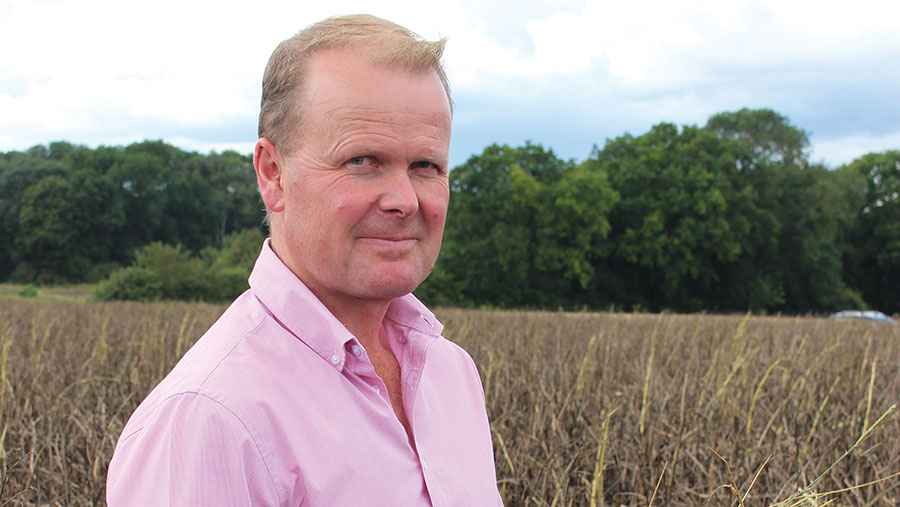Soil health and hedgerow options prove popular in SFI pilot
 © AdobeStock/Feeding
© AdobeStock/Feeding Improvements to soil health are a key focus of Defra’s Sustainable Farming Incentive (SFI) pilot in England, with farmers choosing these options more than any other.
In total, 938 farmers from all major farm types applied for the scheme and three-year agreements are now being offered and returned, with the first beginning on 1 November.
Defra announced earlier that 2,178 had submitted expressions of interest to join the scheme and it sought to attract 1,000 farmers. In a blog, it said the number of applications was “bang on target”.
See also: Payment rates revealed for new Sustainable Farming Incentive pilot
Eight standards are on offer for the pilot. Based on uptake, the two standards aimed directly at maintaining and improving soils were most popular, with nearly 800 farmers selecting these.
This means that 82,000ha of farmland will be managed according to the SFI pilot ambitions for soils, comprising 73,000ha arable and horticultural soils and 9,000ha improved grassland soils.
Three levels
All standards have three levels of ambition (introductory/intermediate/advanced).
For both soil standards, most farmers have selected the highest level of ambition (advanced), for which they will be rewarded £60/ha for arable soils and £70/ha for improved grassland soils.
Farmers can apply for more than one standard on each field. For example, of the 450 farmers who have chosen the arable soils standard, most have also selected the arable land standard.
Those operating at the advanced level of these standards will receive a combined payment of £134ha (£60 for soils and £74 for arable land standard).
Geoff Sansome, head of agriculture at Natural England, was encouraged to see many farmers were “keen to commit to good soil management practices, including increased winter green cover, actions to improve soil organic matter, the use of min/no-till and, in grassland situations, managing livestock density on high-risk soils”.
He added: “Defra and farmer ambitions for soil health are obviously shared and it’s good to see policy and practice working in harmony to achieve these ambitions.”
‘Good uptake’
Claire Robinson, NFU countryside adviser, said: “There has been good uptake on the soils standards and the hedgerow standard. There’s a good split of people across the sectors who want to engage with the pilot, which is good news.”
Tenant Farmers Association chief executive George Dunn said it looked as if enough tenants had signed up to the pilot to enable Defra to understand the implications for the tenanted sector. Some 22% of applicants rent all or most of their land.
The Country Land and Business Association (CLA) said it was pleased that the number of farms entering the SFI pilot was on target, and that many of the agreements will be delivering actions to improve soil health.
CLA president Mark Bridgeman said: “The high uptake of SFI soil standards comes as no surprise, given the enthusiasm among farmers and land managers for greener practices. Well-managed soils store carbon and help mitigate climate change, as well as delivering benefits to water and wildlife.”
The pilot is a key developmental and learning stage for the wider rollout of SFI in 2022 and beyond, which is one of three schemes being introduced under the new Environmental Land Management programme.
The main focus of SFI 2022 will be improving soil health, building on early results of the pilot.
Case study: Edward Vipond, Troston Farms, near Bury St Edmunds

Ed Vipond © Ed Vipond
Mr Vipond, who manages 1,500ha of arable land at Troston Farms, near Bury St Edmunds, said improving soil organic matter, the use of cover crops within the rotation, hedgerows and hedgerow trees are the focus of his application.
“We already use farmyard manure within the rotation and grow catch crops to avoid leaving stubble bare over winter, so the scheme fitted in well,” he explained.
Mr Vipond, who was crowned the 2021 Farmers Weekly Farmer of the Year, applied for the Sustainable Farming Incentive (SFI) pilot due to the addition of a land block that didn’t have an existing environmental scheme upon its purchase.
The land does not have many environmental features, such as woods, grassland and wetland, but it does have hedges. He said applying for the pilot online was simple and he did it himself.
But options that were previously available under Countryside Stewardship, such as beetle banks, arable weed margins and stone curlew plots, are not included in the SFI, which “limits its appeal”.
He also described the payment rates for the low-level tier of the pilot – especially the hedgerow supplement – as “very mediocre”.
Mr Vipond hopes these rates are not mirrored in the future Environmental Land Management (ELM) scheme and that the choice of options is wider, without the “prescriptive approach” of the SFI pilot.
He feels engagement with Defra is essential to increase its understanding of the application process, what works within the environmental scheme options, and to find “fair and reflective” payment rates to increase biodiversity and reduce the carbon footprint of farm businesses.
“To do nothing is not an option. Defra has a clear mandate to chance the way in which agriculture is supported,” said Mr Vipond.
“It would be a major step backwards if they didn’t grasp the opportunity that the ELM scheme has the potential to offer, either as an individual business or a collaborative scheme.”
